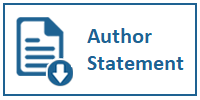Public Relations Strategy of Magdalene Online Media in Shaping Public Awareness of #MendobrakBias Campaign
Public Relations Strategy of Magdalene Online Media in Shaping Public Awareness of #MendobrakBias Campaign
DOI:
https://doi.org/10.31937/ultimacomm.v14i2.2828Keywords:
Public Relations, Strategy, Public Awareness, Campaign, Women's AdvocacyAbstract
The existence of online media in the 5.0 era as it is today is considered as one of the vital components. In the spreading of the flow accurate information, without knowing the limitations of distance and time. In this current digital era, the Public Relations strategy that implied in social media is very crucial. In function to shaping public awareness which related to certain issues. Online media can unwittingly become a space for advocacy practice in the public sphere, as well as Magdalene which focuses on women's advocacy efforts through its content as an alternative media. This study uses a qualitative approach, with constructivist paradigm, and a case study approach. This study shows the implied PR strategy which Magdalene uses in shaping public awareness of #MendobrakBias campaign in order to celebrated International Women's Day on March 8th 2022. One of the strategies implied from the way of Magdalene produce and published the issue, which never published on mainstream media, and the content publication through social media which are packaged in an attractive and contemporary ways, conducting online discussions with the community. So, it makes the public is more aware of #MendobrakBias campaign.
Keywords: Public Relations, Strategy, Public Awareness, Campaign, Women's Advocacy
Downloads
References
Andi Arief, N. P. (2015). Antonio Gramsci Negara dan Hegemoni. Pustaka Pelajar.
Anselm, Strauss, J. C. (2003). Dasar-dasar Penelitian Kualitatif. Pustaka Belajar.
Ardianto, E. (2014). Handbook Of Public Relations, Penghantar Komprehensif (pp. 89–90). Remaja Rosdakarya.
Arief, N. (2019). Public Relations in The Era of Artificial Intelligence. Simbiosa Rekatama Media.
Bogdan, R. T. (2016). Pengantar Metode Penelitian Kualitatif, Terjemahan oleh Arief Rurchan. Usaha Nasional.
Breakenridge, D. K. (n.d.). Social Media and Public Relations Eight New Practices for the PR Professional. Pearson Education, Inc.
Childs, H. (2004). An Introduction to Public Opinion. (Dalam Soem). Remaja Rosdakarya.
Creswell, J. (2014). Penelitian Kualitatif & Desain Riset. Pustaka Pelajar.
Cutlip, Scott. M., C. A. H. & B. G. M. (2009). Effective Public Relations. Kencana.
Frank, J. (2013). Public Relations Edisi Kelima. Erlangga.
Fred, D. (2013). Manajemen Strategi: Konsep-Konsep. (Edisi ke s). PT. Indeks.
Harahap, R. (2019). Pengertian Kesadaran Publik: Faktor dan Cara Meningkatkan Public Awareness. https://www.kosngosan.com/2019/11/pengertian-public-awareness.html
Maryani, E., & Adiprasetio, J. (2017). Magdalene.co Sebagai Media Advokasi Perempuan. Jurnal ILMU KOMUNIKASI, 14(1), 111–124. https://doi.org/10.24002/jik.v14i1.836
McQuail, D. (2011). Teori Komunikasi Massa McQuail. Salemba Humanika.
Oliver, S. (2007). Strategi Public Relations. Erlangga.
Resita, D., & Junaidi, A. (2019). Analisis Strategi Pemberitaan Media Alternatif untuk Isu-Isu Berkaitan Dengan Kekerasan Pada Perempuan (Studi Kasus Magdalene Sebagai Media Online). Koneksi, 2(2), 269. https://doi.org/10.24912/kn.v2i2.3895
Rhenald, K. (2003). Manajemen Public Relations: Konsep dan Aplikasinya di Indonesia. PT. Pusaka Utama Grafiti.
Ruslan, R. (2006). Manajemen Public relations dan media komunikasi. PT. Raja Grafindo.
Sadasri, L. M. (2021). Women'S Issue on New Media. Diakom"¯: Jurnal Media Dan Komunikasi, 4(1), 11–24. https://doi.org/10.17933/diakom.v4i1.149
Theaker, A. (2013). The Public Relations Handbook. The Public Relations Handbook. https://doi.org/10.4324/9780203804827
Yin, R. K. (2009). Case Study Research Design and Methods Fourth Edition. SAGE.
Downloads
Published
How to Cite
Issue
Section
License
Ultimacomm Jurnal Ilmu Komunikasi allows readers to read, download, copy, distribute, print, search, or link to its articles' full texts and allows readers to use them for any other lawful purpose. The journal allows the author(s) to hold the copyright without restrictions. Finally, the journal allows the author(s) to retain publishing rights without restrictions
1. Authors are allowed to archive their submitted article in an open access repository
2. Authors are allowed to archive the final published article in an open access repository with an acknowledgment of its initial publication in this journal














